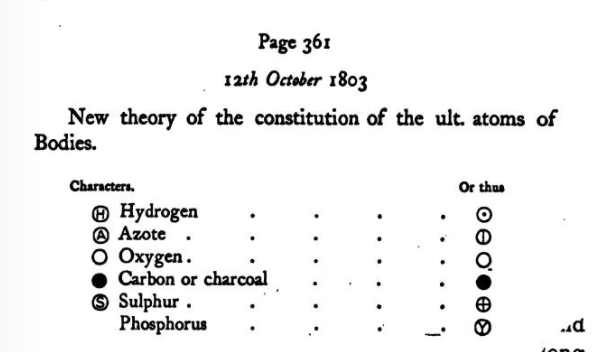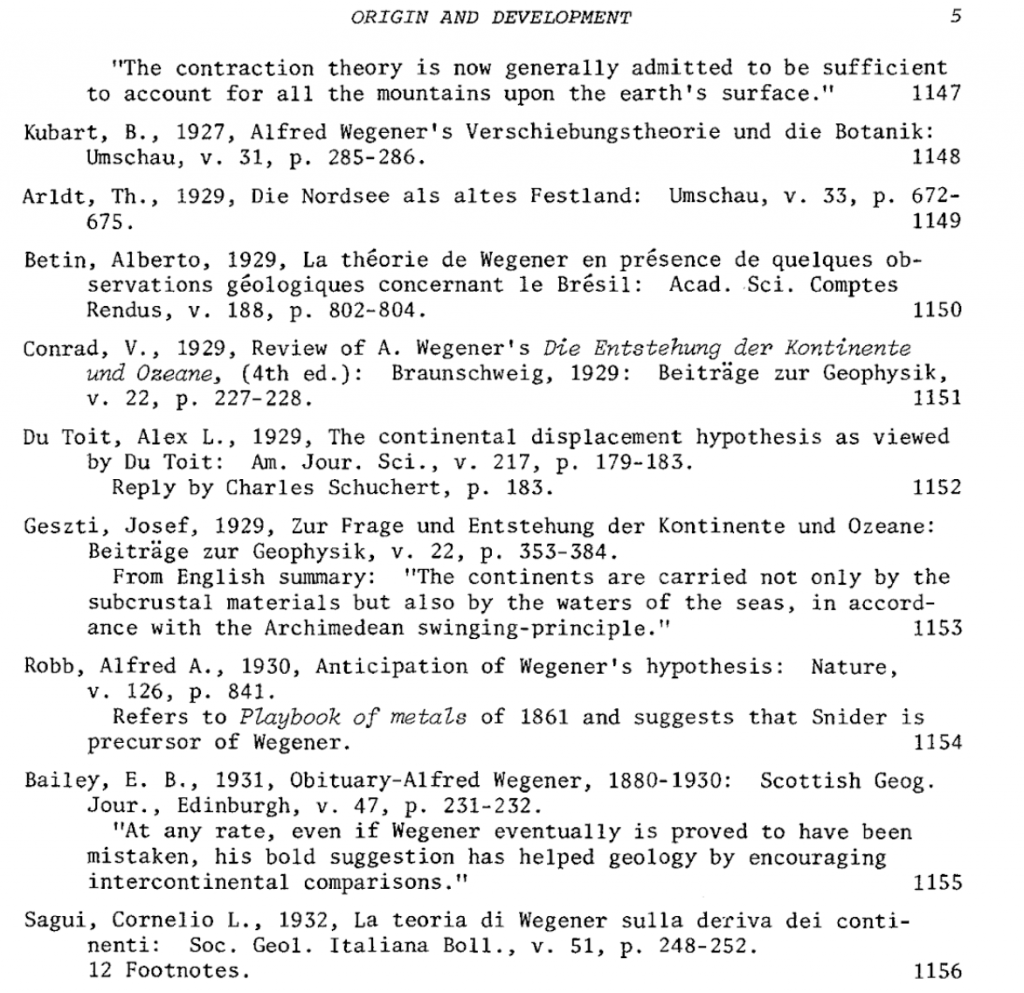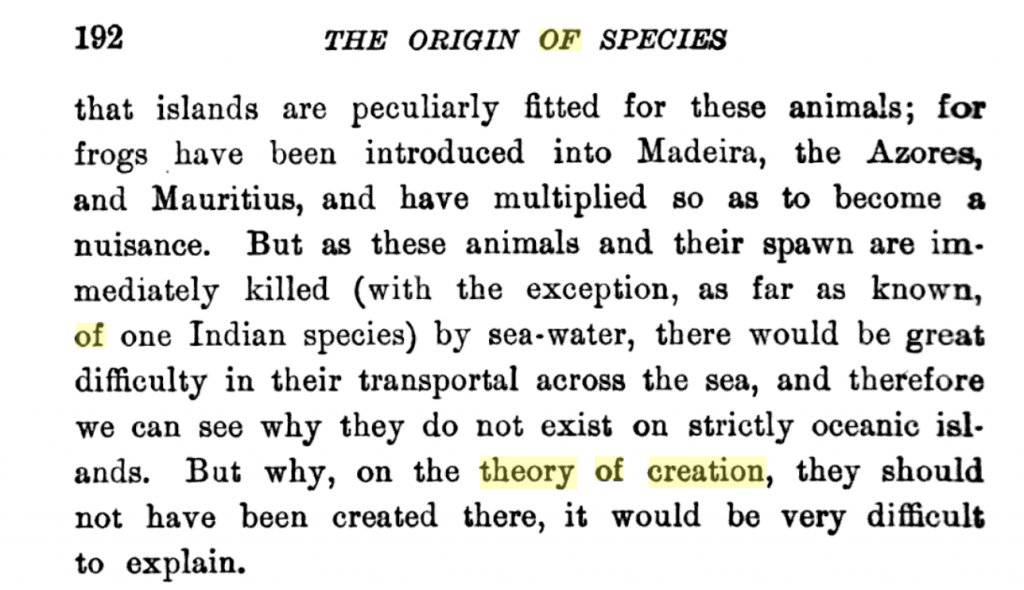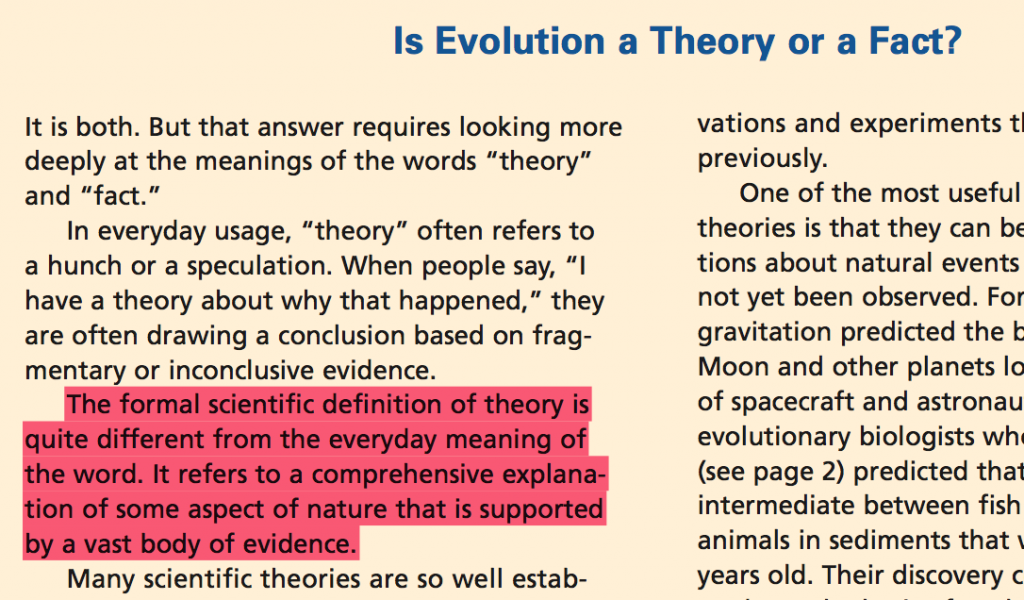A very bad theory about theories
An updated screencast version of this content is here.
In some venues, this is a familiar trope: a creationist asserts that evolution is “just a theory,” and a science advocate responds, explaining that, for scientists, a “theory” is a thoroughly tested, well established explanation.
Yet, for over 200 years, scientists have used “theory” for conjectures that are not well established, even ones whose truth is rejected, e.g., Lamarck’s theory. What is going on?
The term “theory” may have multiple meanings. In an earlier blog (theory vs. theory), we discovered that scientists routinely use the word “theory” to mean either (1) theoryC (concrete, conjectural), a big hypothesis or major conjecture, or (2) theoryA (abstract, analytical), the body of principles relevant to some topic. We use the same word, but we actually treat the two kinds of theory differently, e.g., a theoryC can be refuted by facts but a statement in theoryA is valid if it follows logically from some assumptions, even if this means assuming imaginary things like infinite populations.
A third meaning of “theory” has emerged in the science advocacy literature. According to NCSE screeds, scientists reserve the word “theory” only for constructions that have been extensively verified and are accepted as true, thus the use of “theory of evolution” among scientists means that evolution is well supported. Likewise, the NAS web site explains, in regard to evolutionary biology, that a theory is “a comprehensive explanation of some aspect of nature that is supported by a vast body of evidence”.
This is said to be a “formal scientific definition,” but no sources for this definition are given.
Counter-examples
Unfortunately, the NAS definition is clearly contradicted by usage, even in the case of the examples cited by NAS, which included the atomic theory and plate tectonics. One may easily confirm that these ideas were known to scientists as “theories” long before they were widely accepted.
For instance, Roscoe and Harden (1896, A New View of the Origin of Dalton’s Atomic Theory. London: MacMillan and Co.) published an account of the origins of Dalton’s atomic theory, based on notebooks, correspondence and so on. On p. 11, Dalton is quoted referring to his “theory of mixed gases” (a precursor to the atomic theory); on p. 45, we see a facsimile of a notebook page dated 1803 (figure, right), referring to a “New theory of the constitution of the ult. [ultimate] atoms of Bodies”; and on p. 253, one finds Dalton’s colleague Thomson writing about this “theory” and about other incompatible “theories”. The moment that we see a scientist referring to 2 or more alternative theories, we know that “theory” cannot mean what NAS and NCSE assert.

A facsimile of a page from Dalton’s notebooks from p. 45 of Roscoe and Harden (online version)
The theoryC of continental drift proposed in 1912 by Wegener remained controversial for a half-century due to lack of evidence, and lack of a credible idea for what forces could move continents, and yet was known during this period as the “drift theory” or “continental drift theory”, e.g., as in a 1928 symposium reviewed in Nature. Wegener himself referred to it as the “displacement theory”, e.g., his 1929 book begins with “Entstehung der Verschiebungstheorie”, the origin of the displacement theory.
Again, the evidence that scientists use the word “theory” for unproven conjectures is simply that they apply it to ideas before they are well established, and they may refer to competing ideas, or even rejected ideas, as theories. The image below is a snippet of p. 5 from Kasbeer’s 1975 “Bibliography of Continental Drift and Plate Tectonics,” showing references to the concept in German (theorie), French (théorie), Italian (teoria) and English (theory). 
Note also
- at the top, a reference to the competing “contraction theory” (mountains emerged by contraction of earth’s crust as it cooled from molten rock)
- Robb’s reference to Wegener’s “hypothesis,” indicating some synonymy between theory and hypothesis
- Bailey’s reference to Wegener’s idea as a “bold suggestion,” indicating its speculative nature.
So, we know that, a century ago, European and American scientists used “theory” to refer to conjectures, including a conjecture that is not well established.
I could give many other examples, e.g., de Vries’s “Die MutationsTheorie,” Mereschkowski’s endosymbiotic theory, Wright’s “shifting balance theory,” Kimura’s Neutral Theory, and so on. Darwin’s 1859 Origin of Species uses “theory” 134 times (1st edn), most often referring either to (1) descent with modification or (2) natural selection (often “my theory”), but also to alternatives, e.g., “the theory of creation” (image). 
What these examples tell us is that, for 200 years, actual scientists have been using the word “theory” to mean a grand hypothesis, i.e., consistent with theoryC and inconsistent with “comprehensive explanation supported by a vast body of evidence.”
In praise of dictionaries
Materials from the US National Academy of Sciences (NAS), e.g., this, appear to be the original source of the theories-are-well-established internet canard. However, even NAS sources are inconsistent, e.g., their piece on “the role of theory” in biology (PDF) is mainly about theoryA, and explains how Darwin’s theory did a better job stimulating research than the “prevailing theory” at the time which was a fixed set of species, obviously a reference to theoryC. Likewise, Berkeley’s Learning Evolution website repeats the wrong definition here, but elsewhere refers to “Lamarck’s theory” (i.e., theoryC ). Here are some places where the error is propagated
- NCSE’s (National Center for “Science” Education) bit on facts, theories and laws
- LiveScience.com pieces on what is a theory and misused science words
- The Wikipedia articles on theory and scientific theories
- the RationalWiki article on scientific theory
- BiologyOnline, an educational site
This is unfortunate. What this means is that millions of students and curious onlookers are being exposed to an incorrect understanding of what scientists mean when they refer to theories. Redefining “theory” to mean something well established tries to make a shortcut around an assessment of evidence, i.e., the argument is that, on the grounds that “theory” means something well established, the use of “theory” for evolution means that evolution is well established. This is ultimately an argument from authority, i.e., rather than giving evidence for something, the argument says that scientists who know the evidence have already given it their blessing by calling it a “theory”.
Fortunately, the mistaken definition has not yet spread into genuine dictionaries. Based on my brief survey of online dictionaries (Merriam-Webster, Oxford, Cambridge, Collins) as of 2018, we are better off relying on dictionaries instead of scientists to tell us what “theory” means. For instance, Merriam-Webster gives 6 definitions, most of which align with theoryC or theoryA:
- a plausible or scientifically acceptable general principle or body of principles offered to explain phenomena (the wave theory of light)
- (a) belief, policy, or procedure proposed or followed as the basis of action (her method is based on the theory that all children want to learn); (b) an ideal or hypothetical set of facts, principles, or circumstances —often used in the phrase in theory (in theory, we have always advocated freedom for all);
- (a) hypothesis assumed for the sake of argument or investigation; (b) an unproved assumption: conjecture; (c) a body of theorems presenting a concise systematic view of a subject (theory of equations)
- the general or abstract principles of a body of fact, a science, or an art (music theory)
- abstract thought : speculation
- the analysis of a set of facts in their relation to one another
Going further
In summary, the internet is littered with a renegade definition of “theory” from the NAS that is not just utterly wrong, it is so obviously wrong that anyone with a brain and an internet connection can verify its wrongness in minutes by checking the examples given here.
What can be done about this? I don’t know. What I have done so far is just to show that the NAS definition flies in the face of 200 years of usage. However, I haven’t really answered the question posed at the beginning, namely, what is going on, much less how to stop it. Bullshit is everywhere, yet I can’t fathom how this error emerged, and how it has lasted so long. I certainly don’t know what it would take to reverse the error. Simply pointing out the error is not enough. I have pointed this out to some of the sources above. I haven’t received any replies yet. I haven’t written to NAS, as it is not clear what is the chain of authority for the original 2008 report, which was written by an ad hoc committee of 14 senior people. What would happen if I wrote a letter to all 14 asking them to issue a correction? That would be interesting.
Some sources
- C. Darwin. On the Origin of Species. John Murray, London, 1st edition, 1859.
- W. Gilbert. The exon theory of genes. Cold Spring Harbor Symp. Quant. Biol.,
52:901–5, 1987 - T. Kasbeer. Bibliography of Continental Drift and Plate Tectonics. Geological
Society of America, Boulder, CO, 1975. - M. Kimura. Evolutionary Rate at the Molecular Level. Nature, 217(February 17):
624–626, 1968. - J. King and T. Jukes. Non-Darwinian Evolution. Science, 164:788–797, 1969.
- M. Kreitman. The neutral theory is dead. Long live the neutral theory. Bioessays,
18(8):678–83, 1996. - National Academy of Sciences and Institute of Medicine. Science, Evolution, and
Creationism. Report, National Academy of Sciences, USA, 2008. - H. Roscoe and A. Harden. A New View of the Origin of Dalton’s Atomic Theory.
MacMillan and Co., London, 1896. - C. R. Woese and G. E. Fox. The concept of cellular evolution. J Mol Evol, 10(1):
1–6., 1977. - Working Group on Teaching Evolution. Teaching About Evolution and the Nature of Science (http://fermat.nap.edu/books/0309063647/html/index.html; published ; accessed June 26, 2020). Report 0-309-06364-7, National Academy Press, 1998.
- S. Wright. The Roles of Mutation, Inbreeding, Crossbreeding and Selection in Evolution. Proceedings of the Sixth International Congress of Genetics, 1:356–366, 1932

